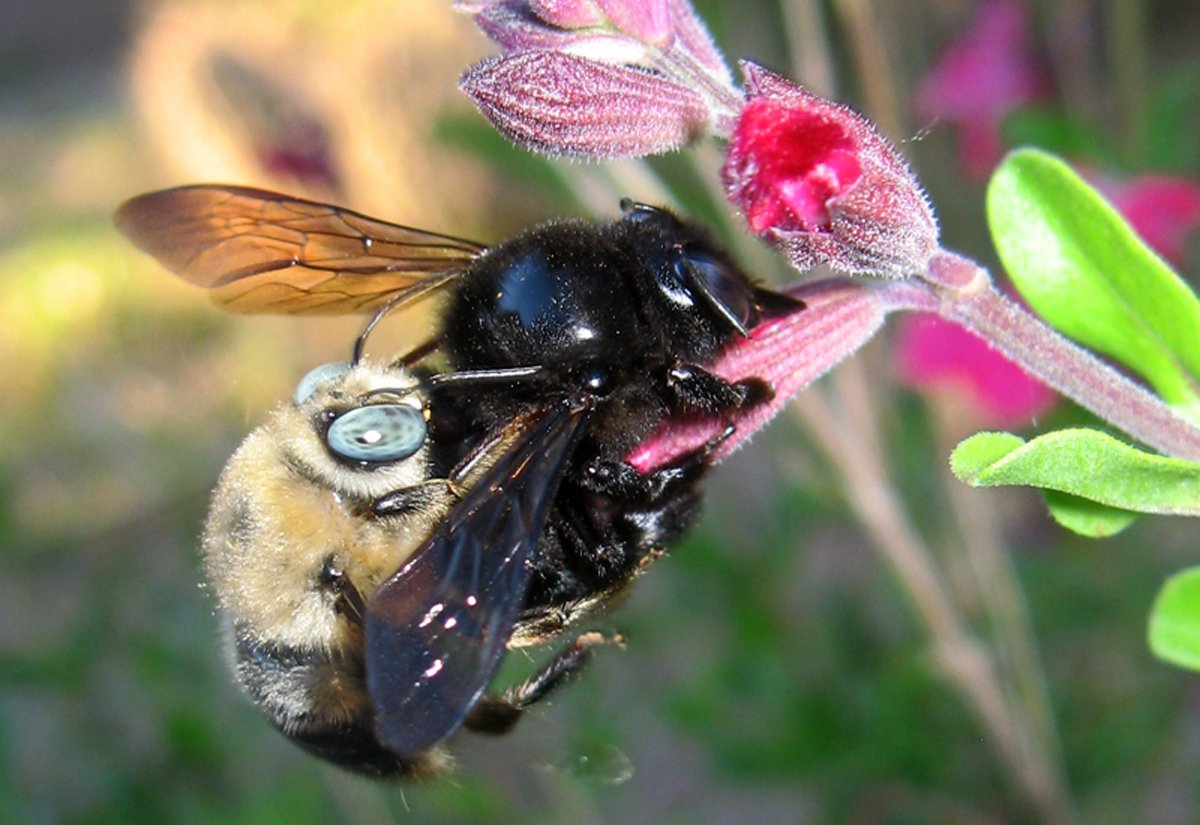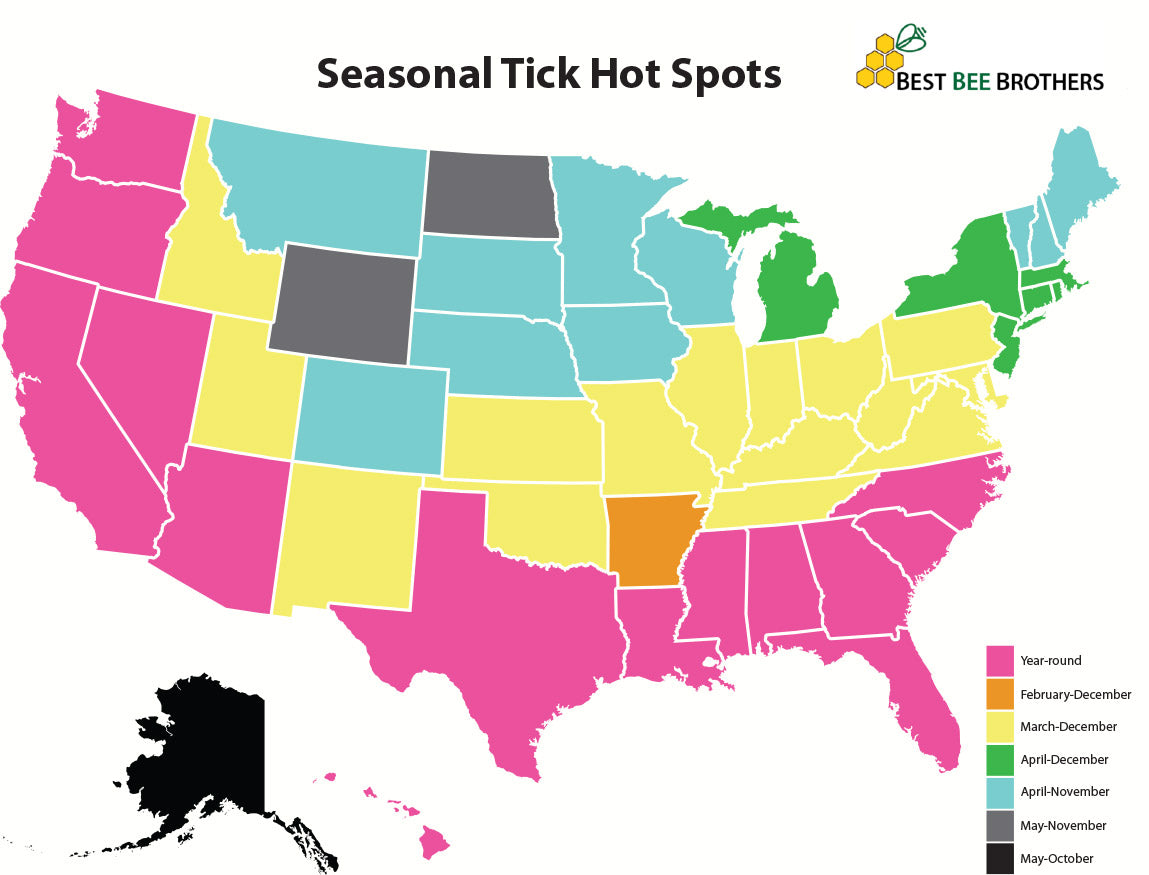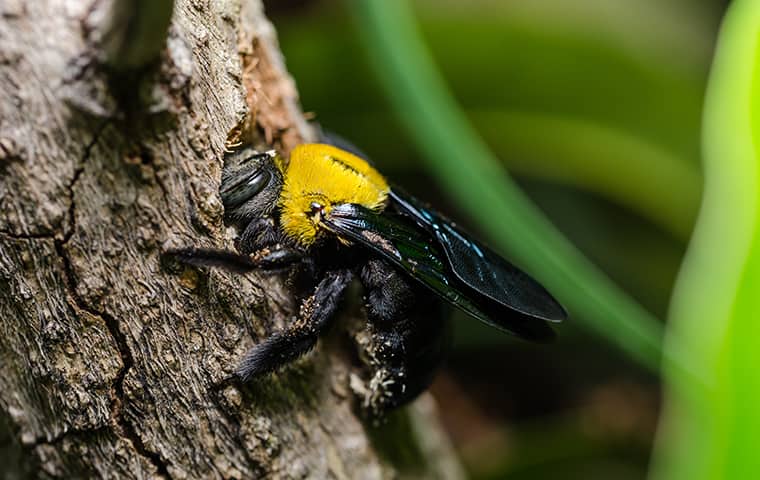When the long overwinter season has finally passed, carpenter bees emerge from their nests (or, more accurately, from their tunnels) in search of food and a mate. This process begins as the weather warms in spring and will continue throughout the summer months. We’ve already identified several characteristics of carpenter bees, but now let’s focus on their offspring: baby carpenter bees.

Do Carpenter Bees Mate?
The short answer here is yes! Like most animal species on planet earth, carpenter bees mate in order to reproduce. While mating rituals may differ slightly from species to species, one interesting example is the eastern carpenter bee, which can be found in the southern, central and eastern United States.1 Male eastern carpenter bees live for the chase, and in order to mate with females, will “catch females in order to mate with them.” In fact, “They will only pursue female bees in flight. If the female bee lands on something, the male bee will either leave her alone or attempt to pull her into the air.” 2

How Many Babies Do Carpenter Bees Have?
Carpenter bees are an interesting species in that they typically only survive one generation per year. That means by the time carpenter bee eggs have grown and matured into adult bees, their parents have likely died. This is especially true of male carpenter bees, who perish after mating.
Each mature female carpenter bee is capable of laying between six to eight eggs,3 which they will deposit into segmented chambers of their nest (tunnel). Each egg is sealed into its chamber with pollen and nectar, and the carpenter bee eggs are placed in sequence with the oldest laid egg in the very back. The maturation period of juvenile carpenter bees, from egg to fully grown adult, typically takes around three months.4 These juvenile carpenter bees are able to fly as early as a few days after emerging from their chamber but typically choose to spend two to three more weeks in the nest.
After this growth period, the newly minted carpenter bee adults will emerge in the last weeks of summer to forage and prepare for their own hibernation period as the cold season approaches once more.
Bringing the cycle full circle, these “new” carpenter bee adults will hibernate through the winter and then emerge in the spring to forage and mate just as their parents did in the years prior. Such is the uncomplicated life story of a carpenter bee.
Prevention: Carpenter Bee Eggs
When it comes to the treatment and prevention of carpenter bees and carpenter bee eggs, the name of the game is simple: preparation. The best way to stop carpenter bee eggs from turning into fully grown adults – which will continue to excavate and elongate the tunnels bored in your home – is to treat the source. If there are no tunnels, there can be no carpenter bee eggs! Thus, preparation in the early spring, before the temperature becomes balmy and ideal for mating season, is an opportune time to treat and plug any existing carpenter bee tunnels.
If you think it's too late and the babies have already emerged, make sure you protect your property with our Carpenter Bee Trap. This will not only help remove the carpenter bee babies that have already got away, but will prevent them from turning your wood structures into a permanent home.
- Deena Hauze, “Xylocopa virginica: Carpenter Bee,” Animal Diversity Web, Museum of Zoology, University of Michigan, https://animaldiversity.org/accounts/Xylocopa_virginica/.
- Dan Gerling and Henry R. Hermann, “Biology and Mating Behavior of Xylocopa virginica L. (Hymenoptera, Anthophoridae),” Behavioral Ecology and Sociobiology 3, no. 2: 99–111, quoted in Deena Hauze, “Xylocopa virginica: Carpenter Bee,” Animal Diversity Web, Museum of Zoology, University of Michigan, https://animaldiversity.org/accounts/Xylocopa_virginica/. https://www.tau.ac.il/lifesci/departments/zoology/members/gerling/documents/30.pdf.
- W. V. Balduf, Life of the Carpenter Bee, Xylocopa virginica (Linn.) (Xylocopidae, Hymenoptera),” Annals of the Entomological Society of America 55, no.e 3 (May 1, 1962): 263–71, https://doi.org/10.1093/aesa/55.3.263.
- “How to Manage Pests: Carpenter Bees,” University of California Statewide IPM Program, last revised June 2014, http://ipm.ucanr.edu/PMG/PESTNOTES/pn7417.html.









1 comment
Joanna Davidson
So glad I have used your Carpenter bee traps. The 2021 spring and summer is the 3rd or 4th time we have used the traps. I have been amazed at the way they go into the traps! This year at the end of June there seem to be no Carpenter bees flying around our wrap around deck. And a number of the Bees are young ones. The traps aren’t even completely full…..so we are happy with them! Thanks!
Leave a comment
All comments are moderated before being published.
This site is protected by hCaptcha and the hCaptcha Privacy Policy and Terms of Service apply.